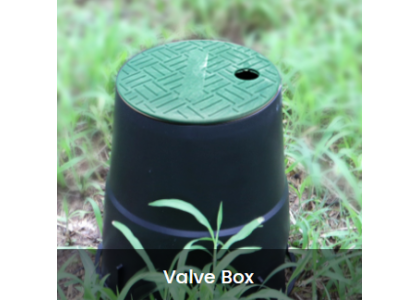
Why use valve boxes at all? A valve box secures the valve in a clean environment and helps prevent damage to the wires and makes finding and working on them more convenient when they need to be serviced. A properly sized valve box will provide plenty of room to access and work on the valve. Valve boxes also protect other parts of an irrigation system that may need service over time. Including wire splices, valves, backflow preventers, and drip emitters.
An emitter box is a valve box manufactured to cover multi-outlet drip emitters. These differ from standard boxes in that they have slots on the sides to accommodate the drip irrigation distribution tubing.
To blend in with the landscape, valve box covers are available in various colors: black, green, Tan, and purple.
If you’re installing a valve box in a turf area, a green cover blends in better with the grass. If you’re installing a box in an area with rock and sand a tan-colored cover may work best, and so on.
When choosing a valve box, size really does matter. If the box is too small for the number of values, it will be nearly impossible to service.
If you don’t have enough working room, you’ll have to dig the box out to work on the valves. This defeats one of the primary purposes of placing the valves in the box in the first place. To achieve optimal performance, choose the size appropriate to the number of valves needed to be enclosed.
Valve boxes are also used in special situations, for example, if you’re installing a fertigation unit or need accessibility to a quick coupler or Q-C-V device.